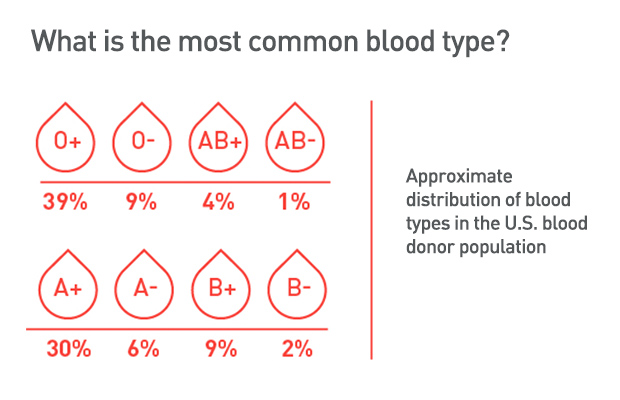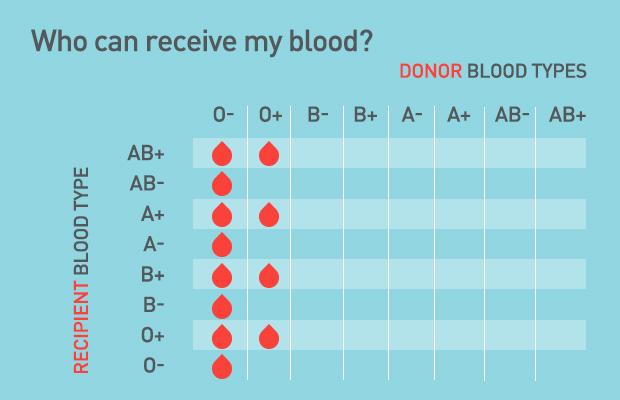Blood Type O
O Positive (O+) and O Negative (O-) are two of the most critical blood types that support patients in our local hospitals. Learn more about type O blood.

O+ Blood Type
As the most common of the 8 blood types, O+ is always needed given the frequent use by hospitals.
In an emergency, it is the first blood type in use!
O+ blood donations help patients with AB+, A+, B+, and O+ blood types.
If you are O+, your blood type is ideal for a Super Reds donation. You can donate just red blood cells through an apheresis (ay-fur-ee-sis) donation, a special kind of blood donation that allows a donor to give specific blood components. During an apheresis procedure, all but the needed blood component is returned to the donor.
This Super Reds donation results in twice as many red cells for patients, and it allows you to donate just three times a year with the same impact as donating whole blood six times a year. Give it a try at your next appointment.

O- Blood Type
O- is the universal blood type.
This means that any patient with any of the 8 blood types can receive O- blood to help them through treatments or trauma accidents. People with type O- blood are often referred to as universal blood donors.
O- people can only receive O- blood which makes this blood type extremely important. Given the vital role of blood type O- in supporting all patients, O- blood donations are always needed.
Facts and Figures: Type O Blood

O+ is the most common blood type. Only 9% of the population have O- blood, which places it among the rarest blood types. Together, 48% of Americans have type O blood.

All blood types can receive type O- blood. However, only recipients with the same Rh marker as O+ donors can receive a transfusion from this blood type — so, recipients with AB+, A+, B+, and O+ blood types can all receive type O+ blood.







